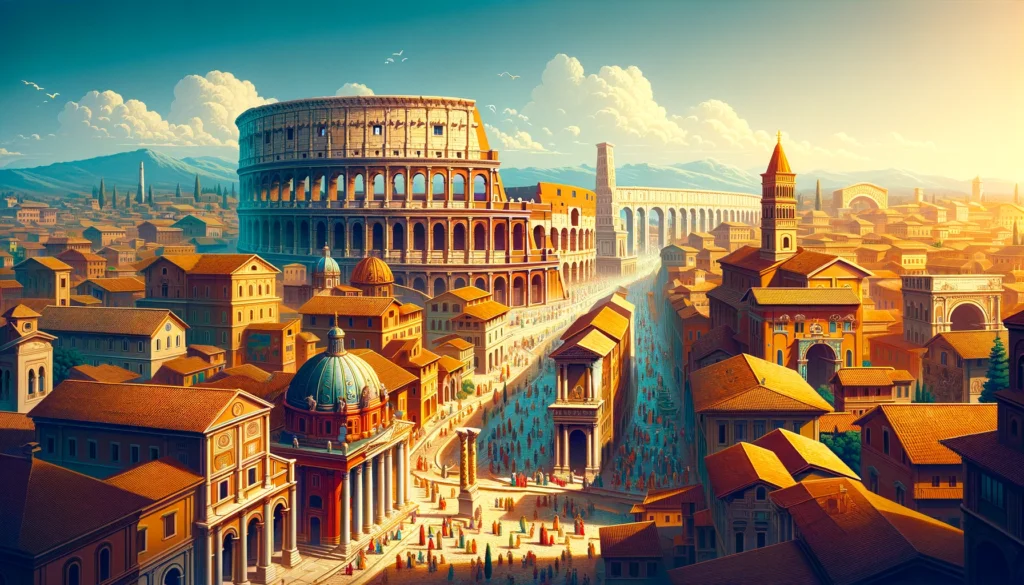The influence of the ancient world under Antiquità is to be discovered, mixing the terms appearing here is a way for us to explore the profound impact these civilizations have on modern society. The traces of Antiquità are imprinted on all aspects of our lives. From the remarkable architectural masterpieces that still stand today as the embodiment of human ingenuity to the philosophical principles that revolutionize our thinking and serve as a fountain of knowledge and understanding, it is undeniable that the ideas and material expression of this period persist to this day. The article does a deep dive into every sphere as far back as these civilizations go into the present and argues their importance then and now.
The Dawn of Antiquità
Anthropologists believe that the very beginning of Antiquity went hand in hand with the emergence of the first big cities and empires in Mesopotamia, Egypt, as well as along the valleys of the Indus and the Yellow Rivers. The oldest civilizations in history did not only lay the groundwork for writing but also implemented technological ideas and built sophisticated institutions.
This signified the perfect parcel of the way their inventions transformed daily life from finessing the wheel to the plow were the precursors of future progress. This investigation goes beyond the framework of the framework; it is more a continual discovery that helps in developing the modern significance of archaeology and cultural sciences.
Building Blocks of the Ancient Urban Landscape
The archeological triumphs are obvious in the remains of Colosseum and Rome, the Pyramids of Egypt and the temples of Athens which stand majestically. These constructions, rather than just the impressive products of engineering, also became signs of cultural, religious, and political magnitudes.
In fact, these structures have significantly shaped Roman architecture nowadays by their adaptation to durability, functionality, and aesthetic harmony. These two elements of classical elegance and modern techniques are continued by contemporary architects.
The Philosophical Rocks of Antiquity
In anciencia philosophia, which came out as foundational for Western ethical, political, and metaphysical thought became possible. Philosophers like Socrates, Plato, and Aristotle specialize in asking about reality, virtue and the way the state is ruled. They have conversations about if individualism is just in line with the social order or the world, the problems that exist today and ideas that are still useful in Western philosophical education, that have influenced various generations and are not outdated.
Canvas of the Ancients
In Antiquità an artist had to be not only realistic and able to picture emotions but also breathe life into ze statues of Roman emperors and the frescoes in Pompei. These works not only exhibit day to day life but also represent the intricate social, religious and political situation of particular times. Modern art repeats these ancient forms and motifs more often, deliberating on their eternal values and permanence of the beauty.
Governance and Power in Antiquità
By coming up with political systems like the democracy in Athens, or the republic and later empire (both from Rome) they consciously or unconsciously modern political structures. The root of the idea of citizenship and the judicial systems has its roots originating during ancient practices.
From today’s legal and political system to principles of ancient times, the latter was at first used to shape the foundations upon which the former would evolve and react to current circumstances.
The Spiritual Spectrum
Religion in Antiquità imposed its specifications across the entire life system to implement the status quo and to add to the cultural panorama. Greek, Roman and Egyptian mythologies popularized with their immortal gods and goddesses explained and mirrored the natural world and gave artistic sources and ethical instruction. Rites and customs of these religions still indelibly shine in the prompt religious sentiments and cultural artifacts of today.
Ingenious Innovations
Greeks gave the world of science and technology several gems, such as the Roman aqueducts, whose revolution had more to do with urban water supply, and Arab mathematicians who put algebra under the spotlight, had changed the face of modern science and engineering forever. By these ancient technologies and those mathematical principles, the basis of further developments in physics, engineering and mathematics such as were had been present.
Warfare and Defense
The military innovations in Antiquità were perfect and were models for organization, strategy, and technology that are still followed today all around the world by military academies. The Roman legions, Macedonian phalanx, and Persian cavalry proved themselves to be highly efficient, very professional warrior groups that introduced into the art of war tactical solutions that have affected modern military strategy to this day and continue to be reflected in the organization and implementation of modern defense strategies.
The Modern Languages’ Origin Stories
Clearly, the languages of the Antiquita – including Latin and Greek – have had a great impact on the wordings, syntax and grammar of European languages through either of the Romance languages.
The other side of the coin is that the ancient manuscripts of the schooled class of the past have saved most of the languages, thus enabling us to research and understand why such a huge amount of the world’s writings today have a very similar origin to the languages of the past.
Modern Rediscoveries and Reconstructions
As current-day archeologists race to uncover the artifacts of the ages, i.eThe sites of the famous Troy and the underwater exploration for the secrets of ancient Alexandria, they not only give greater illumination into the everyday life of the past and their histories, but they also kindle an approval and adoration for cultures and heritage worldwide.
Such findings, by their very nature, stimulate a lasting dialogue between the past and the present, which emphasizes the fact that the divide between the ancient and the modern world is really not as vast and unbridgeable as we previously thought.
Conclusion
Antiquità, through this journey, shows more than a simple view into some signs of human history; it is like a mirror where we can see the mighty trials and the creativity of modernity. From the breathtaking geniality thrones established during the time till the philosophical doctrines that continue to influence our ethics and behaviors overall, Antiquità makes its presence visible beyond just a historical period but in our daily lives. While delving into the diverse aspects of these early civilizations including, their bearings in arts and science, their governance systems and not to mention their spiritual and social beliefs, we should bear it in mind that there is a hidden thread that brings us to the latter. Every time the Antiquità memorial is filled with information and scientific work, it does not merely increase what we know but rekindles our communion with the ancient peoples, whose talents and knowledge formed the basis for our achievements today.
FAQs
What is Antiquità?
This period is recognized as the beginning stage as well as the most important stage in the chronology of humanity. Here we find the early civilizations such as the Mesopotamians, Egyptians, Greeks, and Romans and witness great progress in art, science, governance, and philosophy.
What civilizations had made their mark by this era?
The Antiquità period is divided into 4 significant civilizations that are in the Near East Mesopotamian Civilization, Ancient Egypt, and Greek and Roman. These cultures were the main driving forces behind the development of the modern world society from which we are benefiting. One can mention legal, literary and political systems as just a few examples.
What was the importance of ancient Greeks in the current formation of modern Western philosophy?
Greek culture has been the wellspring of the Western philosophy, arts and science. Indeed, Socrates, Plato and Aristotle investigated in their writings, ethics, metaphysics and politics. His conception of democracy, based primarily on direct democracy of Athens, laid the foundation for the political structures that underpin today’s governments.
What’s the Architectural renovations from Antika?
Roman architects discovered the ability of using arches, the creation of special types of concrete and the building of various varieties of arches. Although the sophisticated town-planning of the Indus Valley Civilization cannot be compared with the outstanding pyramids of Egypt, both structures are a peculiar symbol of the Ancient eras. Greek architects created classic columns (Doric, Ionic, Corinthian). These inventions showcased both advancement in engineering and artistic skills as well as trickled down to enhance longevity and modernity.
Why is studying Antiquità important in the modern world?
The ability to study Antiquità in detail becomes even more important, because this is the starting point of the development of our modern society. It assists in understanding why and how politics, legal codes, aspects of culture and engineering progress lie in the past. Moreover ,being connected to Innovation and adaptation through Antiquità ,we acquire hands -on experience that remains valid up to now .
How did the Romans influence today’s infrastructure?
Romans are the reason for most of the prevailing infrastructure today and their roads and aqueducts are the chief point behind the expansions and maintenance of their empire. Their engineered skill let them maintain the military logistics and sanitation reciprocity of their time and serve as a starting point for the systems of transportation and water supply that we use nowadays.



